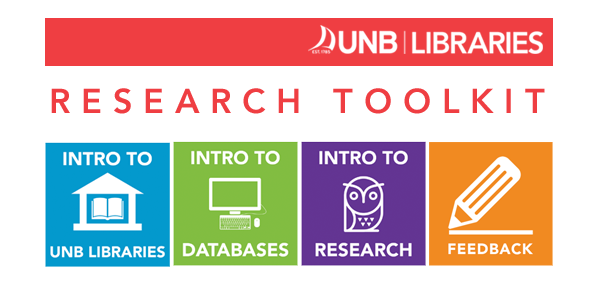Welcome to UNB Libraries!
This guide is designed to lead you through the types of resources that you can find through the Libraries for research. This is a very general guide to those resources. If you want to focus on a particular historical location or aspect, please see the list of Guides on the Libraries' web site.

If you would like to complete a self-paced, comprehensive introduction to UNB Libraries and its resources, please check out the Research Toolkit in D2L Brightspace. It's a free, open course, and available to everyone at UNB. Once you register for the course, you can earn badges for completing sections and a certificate at the end.
Notice that this site is organized using tabs. Each tab lists different kinds of resources, which are usually most useful at different stages of your research process. We suggest that you begin with the 'Reference Materials' tab when starting out. These resources will give you overviews of your subject, define terms, list useful books and journals to look for, and help you to frame your research topic.
Then, use the 'Books' tab to find online and print books at UNB Libraries. Books generally provide more in-depth information on your topic. Scan the Table of Contents and the Index of the books you find, to see if they focus on any aspects of your topic.
Once you feel that you understand your research question, use the 'Articles' tab to locate and read journal articles on your topic. Because journal articles are usually much shorter than books, they tend to spend less time explaining the background of the topic at hand.
If you encounter concepts or terms that you don't understand, loop back to 'Reference Materials' to find a dictionary or encyclopedia that will help you to understand what you're reading.

Depending on the subject area, guides will have additional tabs, such as the 'Primary Sources' tab in History guides, which list collections of documents from various historical periods, and provides instructions for finding more in the library catalogue and in the bibliographies of the books and articles that you find.
Finally, the 'Citing your Sources' tab provides information on how to document what you read and use in your own research, using the style preferred by your discipline.
If you need help using this Guide, or have any questions, please don't hesitate to Ask Us.